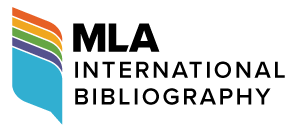Stanley Cavell and Film: Scepticism and Self-Reliance at the Cinema, by Catherine Wheatley. Bloomsbury Academic, 2019, 307 pp.
Glen W. Norton
Stanley Cavell and Film is Catherine Wheatley’s entry in Bloomsbury’s “Film Thinks”, a series dedicated to explorations of cinema’s influence on thinkers such as Noël Carroll, Roland Barthes and Georges Didi-Huberman. Wheatley offers a thorough evaluation of Cavell’s canonical place in the history of Film Studies, and in doing so charts the tortuous trajectory of how Film Studies in turn has critically understood and misunderstood his work. Fortified by the idea that film is central to all of Cavell’s thought, Wheatley takes a chronological approach, with each chapter charting the evolution of main Cavellian concepts/principles (the promise of ordinary language philosophy; problems of everyday scepticism and acknowledgement; the reconceptualisation of moral perfectionism) by delving into works in which they receive their fullest consideration. The ultimate aim is to reveal the full depth behind Cavell’s longstanding claim that, rather than treating film as an immutable object, his work is an “accounting for his own experience of movies”, which in turn requires “taking responsibility for his responses” (14).
Cavell’s thought has long been notoriously, even self-admittedly (see The World Viewed 162) difficult to fully comprehend, which makes this a much-needed and welcome compendium, especially for students and scholars not versed in the traditions of what Wheatley calls his “problematic relationship to a dominant philosophical divide” (19). Cavell’s analytic background often clashes with his more continental concerns and writing style, resulting in a hybrid which some read as “excessive” and “self-indulgent” (13). All this to say Cavell remains “a somewhat divisive, elusive figure for Film Studies” (21). This divisiveness is reflected in an uncritical yet enduring alignment of his thought with, on one hand, a lineage of so-called “realists” stemming from André Bazin and Siegfried Kracauer, and on the other, with Gilles Deleuze as part of Film Studies’ philosophical turn. While the former is attributed to the canonisation of “three short and largely unrepresentative chapters” in the standard anthology Film Theory and Criticism (23), it is more difficult to pinpoint what brings Cavell and Deleuze together beyond their shared vision of “cinema split in two” between a classical and modernist impulse just after World War Two (83). Wheatley seems to agree, and therefore avoids exploring connections between Cavell’s ideas on cinematic modernism and Deleuze’s time image.
Neither a proponent of realism nor some merely esoteric philosopher, Wheatley’s claim is that Cavell should instead be “discussed as a theorist of spectatorship” (71). This is supported by a favourable comparison of Christian Metz’s ideas on the metaphysical barrier between spectator and screen to Cavell’s notion that this relationship should be understood “not in terms of realism but in terms of reality and our connection to it” (70). Thus Chapter Three is dedicated to explicating what is “perhaps the key claim” of Cavell’s cinematic ontology in The World Viewed (70), namely that classical cinema’s traditions automatically satisfy our natural wish to overcome the confines of subjectivity. The world of classical cinema, with its seemingly natural forms and characters, is presented to us as if by magic—that is, without us having to impose our will for it to appear as this world. Cavell’s great insight is that this is also a reinscription of the modern subject’s everyday sceptical position, in that the world presented seemingly in its fullness is nonetheless impenetrable in its absence. Hence Cavell’s interest in classical cinema as a “moving image of skepticism” (87). Countering the automata of classicism is modernism, which for Cavell appears when traditions no longer automatically satisfy, resulting in a “loss of conviction in film’s capacity to carry the world’s presence” (88). This loss of our “natural relation” to cinema reveals a second, more palpable scepticism, in which the modernist auteur offers their own subjectivity in order “to tell, rather than to show” a cinematic world (88).
Wheatley explains how the onset of cinematic modernism overlaps Cavell’s sense of loss about his own “natural relation” with cinema, and in turn how this loss directly informs his ideas on cinematic ontology in The World Viewed. Thus her incisive explications of Cavell-as-spectator lead her to logically posit that “there is no ontology of film that does not involve a film-viewer” (71). However, discussing Cavell primarily as a “theorist of spectatorship” minimises the essential fact that he is always the one viewing. His initial encounters with cinema are the ground from which theoretical extrapolations spring. Perhaps what is missing in Wheatley’s discussion is an exploration of Cavell’s relationship to phenomenology, an avenue of inquiry suggested by Dudley Andrew (182-83). Cavell’s philosophy relies upon an attentiveness toward and an accounting for his immediate viewing experiences. This is similar to the task Maurice Merleau-Ponty sets out for phenomenology, which aims at “re-achieving a direct and primitive contact with the world, and endowing that contact with a philosophical status” (vii). Furthermore, Wheatley points out that “one of the important discoveries of The World Viewed” is its emphasis on the manifold ways “film allows us to look ‘as if anew’ at what is onscreen” (100). This seems almost a direct reference to Edmund Husserl’s method of phenomenological epochē, the ultimate aim of which is to unmask sedimented ideas by attempting to become what he calls a “disinterested spectator” of the world (157; 239). The notion that cinema itself might perform an epochē of the world, similar to what Cavell terms as the world “screened”, needs further exploration.
Since Cavell’s work is predicated on his personal cinematic encounters, any critical assessment must eventually circle the focus back on the man himself. From the outset, Wheatley recognises that Cavell writes from a place of white, male, Ivy League privilege (16), and justifiably spends a great deal of time on Cavell’s initial failures to address the blind spots of gender, race and, to a lesser extent, sexuality, for which critics have taken him to task. Wheatley is balanced in her assessments, treating these criticisms with the seriousness they deserve while placing them in the context of Cavell’s ultimate aims. They begin with Pursuits of Happiness, the primary subject of Chapter Four, in which Cavell attempts to understand how overcoming scepticism feeds the myth and logic of the Classical Hollywood remarriage comedy. Wheatley outlines contentions from critics Kathrina Glitre and Catherine Constable that the book is “underpinned by a level of patriarchal assumption” (129) in its emphasis on the paradoxical idea “that a marriage of equals is premised on the man’s education of the woman” (128). This leads to the claim that Cavell often misreads who exactly is educating whom in these films, evidenced by a summary of persuasive arguments against Cavell’s reading of The Awful Truth (Leo McCarey, 1937) (128-29). Wheatley attempts to temper these criticisms by explicating the links between the remarriage comedy and Cavell’s rather complex reading of the myth of the Fall (130-31).
Wheatley also considers the forceful criticisms of Contesting Tears, the focus of Chapter Five, in which Cavell turns to the Hollywood melodrama of the unknown woman. Interestingly, as Wheatley points out, “every feature that made up the foundational myth of remarriage comedy finds its opposite in the melodramas” (147). Even so, Cavell still tends toward gender blindness. Tania Modleski, for example, “chides Cavell for his appropriation of female suffering” (176) in the name of abstract theoretical constructs of the feminine. Wheatley outlines the primary debate, which revolves around Cavell’s challenge to the standard reading by Linda Williams and others that Stella Dallas (King Vidor, 1937) devalues its titular character as both mother and woman due to her inability to understand the rules of conventional society. Cavell contends that there is no misunderstanding, and that Stella in fact “abdicates her role of mother on purpose” (164). Wheatley agrees, asking: “Is it so difficult, after all, to imagine that a woman might actually want to be something other than a mother?” (165).
More difficult to assess is Cavell’s reading of Fred Astaire’s well-known “shoeshine” number in The Band Wagon (Vincente Minnelli, 1953). Cavell claims it is “a dance of praise”, insisting it involves “acknowledgment of the genius of black dancing […] an acknowledgement of debt, a recognition that another’s dancing has been appropriated” (230). Wheatley grants a large amount of space to critical analyses from Robert Gooding-Williams and others, who instead claim the scene problematically mirrors this appropriation from a position of 1950s Hollywood white privilege and dominance. Wheatley concludes that “Cavell’s praise of Astaire’s praise may well be misplaced” (234).
Wheatley makes explicit that the criticisms above point to the possibility that Cavell is “failing, in his own way, to acknowledge the existence of others” (159). This is a serious charge, since, as explicated in Chapter Four, acknowledgement is a key component in Cavell’s response to scepticism. For Cavell, scepticism cannot be overcome via certainty; to be absolutely certain about another’s pain (to use Cavell’s example from both “Knowing and Acknowledging” and The Claim of Reason) is an impossible task. Perceiving another’s pain demands acknowledging and responding to it in some way, not proof about its veracity. Thus, with these criticisms “ringing in his ears” (159), Cavell is eventually moved to acknowledge them in his own work. For example, Wheatley reveals how he incorporates the criticisms of Modleski and others in the final version of Contesting Tears, and later, in “The Incessance and the Absence of the Political”, how he admits having ignored African-American philosophical thought in response to specific criticisms surrounding his work on The Band Wagon. Thus Wheatley reads Cavell as taking his own ideas to heart by acknowledging others and acting accordingly, and posits that this action leads to moral self-reflection: “It is as a result of the conversations […] that he enters into with Modleski, Williams and others, that Cavell comes to turn back to himself, to consider the place of his own voice in these conversations, and to ‘begin to write autobiographically’” (177-78). This renewed focus on autobiography, announced around the time of Contesting Tears, “serves as a hinge between epistemology and ethics” and thus “marks a turn away from scepticism as Cavell’s first concern and towards the explicit moral philosophy that will shape Cavell’s work to come” (139).
Cavell’s turn toward moral philosophy is built upon a reconceptualisation of philosophical perfectionism, an idea which receives its fullest articulation in “The Good of Film” and subsequently shapes the essays in Cities of Words, the primary focus of Chapter Six. Inspired by Ralph Waldo Emerson’s ideas on self-reliance, Cavellian moral perfection describes “the unattained yet attainable self”, in which “every attained state is effectively perfect just as it is–and yet it could still be more perfect” (184). On the surface, perfectionism could be misconstrued as a call to “self-improvement”, complete with all the culturally determined self-help connotations this implies. Although Wheatley uses this slightly misleading term, she clarifies that, for Cavell, this is a “debasement” of perfectionism (207). Instead, Cavellian perfectionism depends upon conceptualising “a split in the human self, seeing human nature as divided or double” (186), and thus involves the rather Kierkegaardian everyday choice of self. Guiding this choice of self is acknowledgement of an exemplar who inspires what Cavell calls “moral reasoning”: dialogue aimed at making oneself intelligible to others as well as to oneself. Wheatley recasts Cavell’s work on comedy and melodrama in this perfectionist light, recalling how exemplary dialogue manifests in particularly gendered ways for the comedies, whereas in the melodramas it becomes instead a monologue in which a long-suffering woman “must simply reach inside herself in order to find an exemplar” (196). Notably, even after claiming Cavell’s dialogue with critics leads to his own perfectionism, Wheatley finds little evidence of it in most of the essays in Cities of Words, wryly commenting that “in perfectionism, as in the overcoming of scepticism, the ‘creation of women’ remains the ‘business of men’” (196). The one exception, perhaps not surprisingly, is Cavell’s essay on Conte d’hiver (Eric Rohmer, 1992), a rare departure from his usual focus on Classical Hollywood genre. Wheatley appropriately offers a lengthy, nuanced analysis of Cavell’s response to its lead character’s journey toward her perfectionist moment.
Importantly, Wheatley notes that the films Cavell cares about “do not just show us transformation, but they bring about transformation, in the spectator” (209). For Cavell, film can be an exemplar for our own lives, since it has the potential to reveal that “every decision we make—however big or small—is in a sense a moral decision” (191). This is Cavell’s sense of the “good” of film. However, it must be remembered that this “good” is not an objective description, in the sense of “a good film”. It seems more precise, following Cavell himself, to suggest the good of film depends on a “good encounter” (Pursuits of Happiness 13), since encountering the same film twice does not necessarily mean one will have the same experience each time. There is always the danger that one might miss or even dismiss what makes any cinematic encounter “good”. This justifies Wheatley’s insistence on concluding her book with evaluations of various paradigms under which Cavell’s criticism can ultimately be read as an act of love, a “passionate utterance” aimed at clarifying his good encounters with film for himself by making them understood to others (236). Wheatley emphasises that this love runs the risk, not of rebuke, but of dismissal: “To rebuke someone is to enter or to acknowledge already being entered into a community, a culture […] to dismiss someone is to plunge into scepticism” (242). At bottom, then, Wheatley’s book can be understood as its own Cavellian act of love. She seeks to acknowledge, often via critical rebuke but never dismissal, what makes Cavell’s work relevant, vital even, to Film Studies today.
References
1. Andrew, Dudley. The Major Film Theories. Oxford UP, 1976.
2. The Awful Truth. Directed by Leo McCarey, Columbia Pictures, 1937.
3. The Band Wagon. Directed by Vincente Minnelli, MGM, 1953.
4. Braudy, Leo, and Marshall Cohen, editors. Film Theory and Criticism: Introductory Readings, 5th edition, Oxford UP, 1999.
5. Cavell, Stanley. Cities of Words: Pedagogical Letters on a Register of the Moral Life. Harvard UP, 2004.
6. ---. The Claim of Reason: Wittgenstein, Skepticism, Morality, and Tragedy. Oxford UP, 1979.
7. ---. Contesting Tears: The Hollywood Melodrama of the Unknown Woman. U of Chicago P, 1996.
8. ---. “The Good of Film.” Cavell on Film, edited by William Rothman, SUNY Press, 2005, pp. 333-48.
9. ---. “The Incessance and the Absence of the Political.” The Claim to Community: Essays on Stanley Cavell and Political Philosophy, edited by Andrew Norris, Stanford UP, 2006, pp. 263-317.
10. ---. “Knowing and Acknowledging.” Must We Mean What We Say?, updated edition, Cambridge UP, 2002, pp. 238-66.
11. ---. Pursuits of Happiness: The Hollywood Comedy of Remarriage. Harvard UP, 1981.
12. ---. The World Viewed: Reflections on the Ontology of Film. Enlarged edition, Harvard UP, 1979.
13. Constable, Catherine. “Seeing Lucy’s Perspective: Returning to Cavell, Wittgenstein and The Awful Truth.” New Review of Film and Television Studies, vol. 9, no. 3, 2011, pp. 358-75, DOI: https://doi.org/10.1080/17400309.2011.585868.
14. Conte d’hiver. Directed by Eric Rohmer, Les Films du Losange, 1992.
15. Emerson, Ralph Waldo. Self-Reliance. Peter PauperPress, 1967.
16. Glitre, Kathrina. “‘The Same, But Different’ The Awful Truth About Marriage, Remarriage and Screwball Comedy.” Cineaction, vol. 54, 2001, pp. 2-11.
17. Gooding-Williams, Robert. “Aesthetics and Receptivity: Kant, Nietzsche, Cavell and Astaire.” The Claim to Community: Essays on Stanley Cavell and Political Philosophy, edited by Andrew Norris, Stanford UP, 2006, pp. 236-62.
18. Husserl, Edmund. The Crisis of European Sciences and Transcendental Phenomenology. Translated, with an introduction, by David Carr, Northwestern UP, 1970.19. Merleau-Ponty, Maurice. Phenomenology of Perception. Translated by Colin Smith, Routledge, 1962.
20. Metz, Christian. Film Language: A Semiotics of the Cinema. Translated by Michael Taylor, Oxford UP, 1974.
21. Modleski, Tania. Feminism Without Women: Culture and Criticism in a “Postfeminist” Age. Routledge, 1991.
22. Stella Dallas. Directed by King Vidor, United Artists, 1937.
23. Williams, Linda. “Something Else Besides a Woman: Stella Dallas and the Maternal Melodrama.” Cinema Journal, vol. 24, no 1, Autumn 1984, pp. 2-27, DOI: https://doi.org/10.2307/1225306.
Suggested Citation
Norton, Glen W. “Stanley Cavell and Film: Scepticism and Self-Reliance at the Cinema, by Catherine Wheatley.” Book review. Alphaville: Journal of Film and Screen Media, no. 20, 2020, pp. 237–242, https://doi.org/10.33178/alpha.20.19.
Glen W. Norton teaches in the Department of English and Film Studies at Wilfrid Laurier University. His research embraces phenomenological approaches toward the study of cinema, with focus on the ties between the expression of lived temporality and existential ethics. He is the digital curator of Cinema=Godard=Cinema, an online, open-access website dedicated to scholarly study of the work of Jean-Luc Godard. He is currently completing Lived Moments: Phenomenology, Neorealism, and the New Wave, which charts an evolving modernist attitude toward the intertwining of cinema and lived experience.









